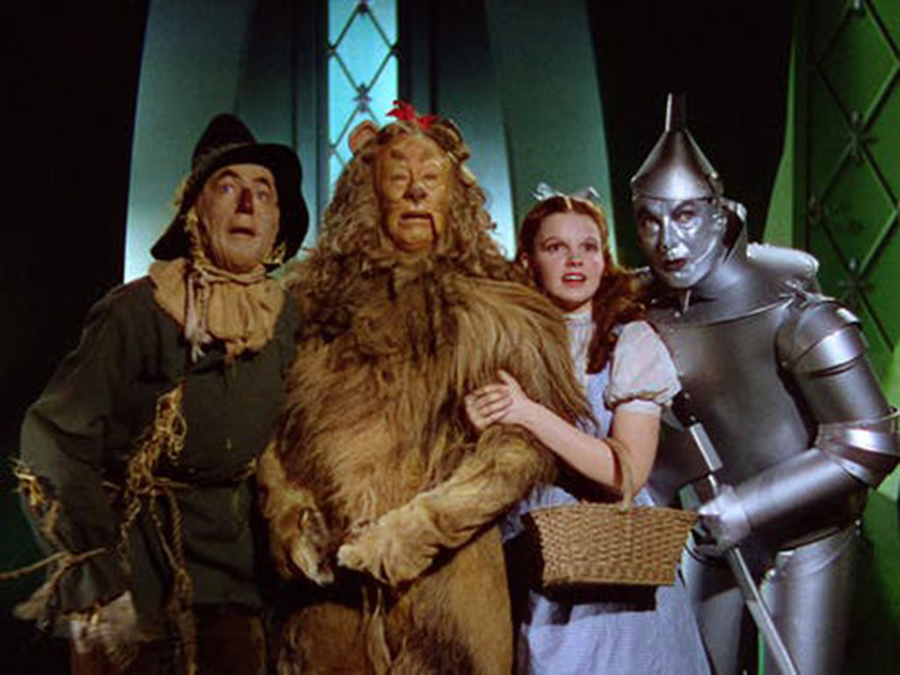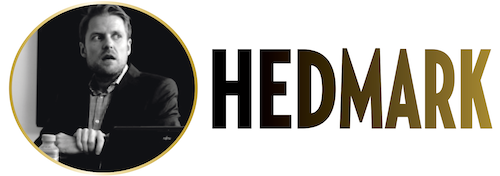
METRO-GOLDWYN-MAYER’S TECHNICOLOR TRIUMPH.

L. Frank Baum’s classic novel “The Wonderful Wizard of Oz” was filmed in 1910 and 1925… but those movies are largely forgotten. It isn’t often that a film adaptation is successful on its third attempt, but the 1939 version is considered a masterpiece. It is also one of my top three favorite movies. It simply has everything and proves once again that a troubled shoot is not necessarily a detriment.
Falling victim to a twister
Twelve-year-old Dorothy Gale (Judy Garland) lives on a Kansas farm with her aunt and uncle and three stablehands. A local woman, Miss Gulch (Margaret Hamilton), hates Dorothy’s little dog Toto (especially after it bit her) and has convinced the sheriff to give her the right to take the dog away. However, Dorothy rescues her best friend… only to fall victim to a twister. She tries to seek shelter inside her house, but the storm envelops it and Dorothy is knocked unconscious. When she wakes up and opens the front door, she steps into a blindingly colorful landscape populated by little people called Munchkins, as well as good and evil witches.
The twister has taken her to the land of Oz and the house landed on the Wicked Witch of the East. The Wicked Witch of the West (Hamilton) wants her associate’s ruby slippers because of their mysterious powers, but the Good Witch of the North (Billie Burke) makes sure they’re firmly planted on Dorothy’s feet. She tells Dorothy that the best way for her to return to Kansas is to head to the Emerald City and seek advice from the Wizard of Oz.
Every song has become a classic
The moment when Dorothy steps into that wonderful world is a true revelation. Up until then, the film is in sepia, which only makes the subsequent Technicolor explosion all the more powerful. The production design has a lot to do with that; all the colors of the rainbow have been deployed (not least in the beautiful matte paintings), which is apt for a film that takes place, you know, somewhere over the rainbow.
The casting is brilliant; when I was a kid I didn’t realize that most of the actors play dual parts, which was a pleasant surprise the second time I saw it. Everybody involved delivered their most famous performances. The teenaged Garland is believable as an innocent but gutsy twelve-year-old; Hamilton has become the archetypal cackling witch; Frank Morgan is lovable as the fortune teller in Kansas who turns out to be quite the manipulator in Oz; and then there’s the fabulous trio of Ray Bolger, Bert Lahr and Jack Haley who are immensely entertaining (both comically and musically) as the scarecrow, lion and tin man who all seek quick fixes for their conditions.
Any flaws in the special effects are easy to accept and the movie skillfully blends thrills (like flying monkeys) with plenty of comedy in this traditionally romantic fairy tale.
The music is amazing; virtually every song has become a classic, ably performed by the cast and that includes the group of little people called The Singing Midgets who played the Munchkins. Still, in spite of all the colors, it is the sepia scene where Dorothy sings “Over the Rainbow” that has become immortal. Any flaws in the special effects are easy to accept and the movie skillfully blends thrills (like flying monkeys) with plenty of comedy in this traditionally romantic fairy tale. The film is one huge salute to the power of childhood imagination as well as an attempt to tell kids that it’s necessary to have the courage to say out loud, “the emperor is naked”.
I don’t do drugs. But this story is so outlandish that I imagine a group of screenwriters sitting locked up in a smoke-filled room coming up with one crazy idea after another. But following that yellow brick road to the greatest Hollywood adventure ever made must be better than chasing the dragon.
The Wizard of Oz 1939-U.S. 101 min. Color-B/W. Produced by Mervyn LeRoy. Directed by Victor Fleming. Screenplay: Noel Langley, Florence Ryerson, Edgar Allan Woolf. Novel: L. Frank Baum “The Wonderful Wizard of Oz”). Cinematography: Harold Rosson. Music: Herbert Stothart. Songs: E.Y. Harburg, Harold Arlen (“Over the Rainbow”, “Ding Dong The Witch Is Dead”, “Follow the Yellow Brick Road”, “We’re Off to See the Wizard”, “If I Only Had a Heart”). Art Direction: Cedric Gibbons. Cast: Judy Garland (Dorothy Gale), Ray Bolger (Hunk/The Scarecrow), Bert Lahr (Zeke/The Cowardly Lion), Jack Haley (Hickory/The Tin Man), Frank Morgan, Billie Burke, Margaret Hamilton.
Trivia: King Vidor shot scenes for the film; George Cukor initially served as an advisor. They both contributed to the script and so did Herman J. Mankiewicz. W.C. Fields was considered for the part of the Wizard; Shirley Temple and Deanna Durbin as Dorothy. Buddy Ebsen was first cast as the Tin Man but left the picture after having an allergic reaction to the aluminum powder makeup. Followed by Journey Back to Oz (1974), Return to Oz (1985) and a prequel, Oz the Great and Powerful (2013); remade as Oz (1976), The Wiz (1978) and a TV movie, The Muppets’ Wizard of Oz (2005).
Oscars: Best Original Score, Original Song (“Over the Rainbow”) (Garland also received a special miniature award).
Quote: “Toto, I have a feeling we’re not in Kansas anymore.” (Garland)
Last word: “Well, naturally the opening (in Munchkinland) when the good witch appears and Dorothy asks ‘What are Munchkins?’ That of course introduces the word ‘Munchkin’ to the public. It was a word that was coined by the author Frank Baum. That word ‘Munchkin’ became standardized. Everybody on the street, everybody you talk to uses that term. That to me is one of the high points. And of course, personally I have to refer to my own scene standing alongside Judy Garland, presenting the death certificate which, of course, is the one thing people from all over the country remember, including the lines – children and elderly people ask me to repeat the lines to verify that I’m still it!” (Meinhardt Raabe, one of the original Munchkins, on his favorite moment from the movie, The Dove Foundation)
